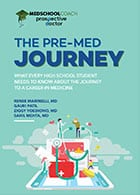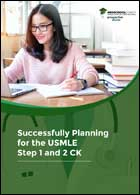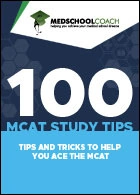
Table of Contents
The ERAS personal statement is a critical factor in your residency application and Residency Match. Similar to the medical school personal statement, this is your chance to tell a story about why you’re qualified to move on to the next step of medical training.
There are, however, some key differences between the ERAS personal statement and the one you wrote as a med school applicant four years ago.
For one thing, you can write an unlimited number of personal statement variations within MyERAS. This allows you to tailor your essay to each residency program, highlighting specific aspects that align with their values and focus areas.
Another distinction lies in the style and structure. In general, there’s less room to be creative with your residency personal statement — this is not the time for flowery language or flashy imagery. Admissions committees also expect the essay to follow a specific structure (which I’ll discuss below), and deviations from this structure are generally punished.
Let’s dive into everything you need to know to craft a standout ERAS essay.
How Long Should a Personal Statement for Residency Be?
MyERAS caps the residency personal statement length to 28,000 characters, which is anywhere from 4,000-7,000 words or 20 double-spaced pages. However, program directors must read your demographics, transcripts, MSPE, experiences section, personal statement, and letters of recommendation before making a decision. That’s a lot of reading.
Instead of maxing out the character count, aim to make your point concisely. Fitting your writing into a single page of the application (around 700 words) is the sweet spot. In fact, some admissions committee members have admitted that they’ll stop reading your essay if it spills over onto a second page.
How can you tell if your essay is to long? Paste your writing into ERAS and then use the View/Print MyERAS Application feature located on the Application section of the Dashboard. This allows to see how your essay will appear to programs.
Want to stand out among the crowd for a competitive residency spot? Our residency consulting clients have a 97% Match rate into their specialty of choice.
The Goal of the ERAS Personal Statement
The ERAS personal statement is not meant to be a restatement of your CV, nor is it meant to be an exercise in creative writing. Instead, your essay should demonstrate why you are qualified for your specialty of choice, backed up by examples of relevant experiences (and what you learned from them) that will set you up for success in that specialty.
The personal statement is your chance to show why you’re a good fit beyond the quantitative metrics on your application – grades, USMLE scores, etc.
A secondary goal of this essay is to explain to programs what you’re looking for as a future resident. Remember: just as you have to compete for programs as an applicant, programs also have to compete for you. So make sure you let them know what your criteria are as a physician.
Read Next: How to Expertly Fill out the ERAS Experiences Section
What to Include
Remember that the structure of this essay should not be creative or unique. Admissions committees are just looking for a straightforward discussion that touches on the following points:
- Why this specialty? Discuss what drew you to this specialty, why you enjoy it, and why you want to dedicate your future career to it.
- What sets you apart? Try to think beyond qualitative metrics and consider how your personal qualities, background, and extracurricular interests, and research interests contribute to you as an applicant.
- What are YOU looking for? What elements will influence which programs you rank highest? For instance, are you looking for a strong research focus or a program in specific type of location (rural, urban, etc.)?
- What are your long-term career goals? What do you want to accomplish after completing your medical education? Are you set on private practice, academia, research, or a combination? (Avoid the mention of salary here.)
- How should readers interpret potential red flags? Are there any weaknesses that program directors may notice in your ERAS application, such why you had to take Step 1 a second time? If so, can you offer some explanation as to how you are actively working to improve in that area?
- Why this program? While it’s probably not feasible to submit a custom essay to every program you’re applying to, it might be a good idea to do so for programs you’re really set on. You can mention things like ties to the location or patient populaton, specific tracks they offer, or your prior experience with the program in medical school or on an away rotation.
Personal Statement Structure
As I’ve mentioned, your essay should follow a specific structure, even if it means sounding a little boring. Remember: admissions committees just want a matter-of-fact account of your achievements, goals, and interests as a physician.
There are four main paragraphs your essay should include:
- Introduction
- Why I Chose This Specialty
- Why I’m Qualified for This Specialty
With this approach to the structure of your personal statement, the essay becomes more manageable. Set yourself mini-assignments by just developing one component at a time. Complete one portion each week, and you’ll be done by the end of the month!
Here’s how to approach each section individually.
Introduction (1st paragraph)
This paragraph offers the most creative freedom. Feel free to introduce a theme to draw the reader in, but don’t open with a flashy anecdote or extensive story. Keep your tone formal and professional.
Once you have a hook, immediately start talking about your chosen specialty. This paragraph should culminate with a thesis statement — a sentence that summarizes your reasons for choosing your specialty and your qualifications for it.
Why I Chose This Specialty (2nd Paragraph)
This is where you explain the first part of your thesis statement: your reasons for pursuing your chosen specialty. In general, this paragraph should draw on your clinical experiences within the specialty. Think back to your rotations, and select no more than three anecdotes that illustrate your interest in the specialty.
The important thing here is not so much the anecdotes themselves, but rather how you reflect on them. By and large, most applicants are going to have similar experiences, so the way to differentiate yourself is with the depth of your reflections on those experiences. What did you learn from them as a developing physician?
Why I’m Qualified for This Specialty (3rd Paragraph)
This is where you explain the second part of your thesis statement: the reasons why you’re qualified for your chosen specialty. This paragraph should reference no more than three activities from your CV that demonstrate your skills. (If you’re applying to a competitive specialty, center the discussion around your research experience.)
Again, the important part here is not so much the specific experiences you mention (AdComs can see your CV), but what you learned from them and how they helped you develop the requisite skills for this specialty.
What I Want in a Residency Program (4th Paragraph)
This is where you fulfill the secondary purpose of your essay: explaining what characteristics you’re looking for in a residency program. There are many things you could address here: program size, location, patient population, private practice vs academic medicine, fellowship interests, research-focused or not, etc.
You could also use this paragraph to convey to the specific programs you’re really interested in why their program would be a good fit. Be sure to mention any ties you have to the program location or patient population, interest in unique tracks they offer, or any away rotation experience you had with the program.
Conclusion (Final Sentence)
Write a conclusion sentence that ties back to your thesis statement (restate why you’re interested in the specialty and why you’re qualified for it). Bonus points if you touch on the theme or hook you introduced in your intro paragraph.
Should You Write Multiple ERAS Personal Statements?
Write a residency personal statement relevant to each specialty you apply to, each with a clearly stated goal. You don’t necessarily have to write one for each specific program you apply to.
The exception to this is that it may be appropriate to write a variation on your essay specific to programs that you’re really interested in, specifically those to which you may send a letter of interest in the future.
I recommend doing this only if you have a strong interest in a specific program that will fit into the narrative of your personal statement. (Don’t mention the letter; just briefly explain why you are interested in that exact program. You may change your mind after the interview process.)
A blanket personal statement to cover all specialties is bland at best and, at worst, a red flag. Different experiences should inform your interest in radiology than your interest in anesthesiology or plastic surgery, whether it be what you experienced through your rotations, classroom learning, or something else altogether.
Best Practices for Maximum Impact
These are my top 9 tips for maximizing the potential of your residency personal statement:
1. Write in a plain-text editor first.
Don’t write each draft within MyERAS, as this makes it easy to submit a first draft by mistake and makes it harder to share your drafts with others for feedback.
Once your essay is ready to send to residency programs, you can paste it into MyERAS and add rich formatting (bold, italic, underlining, bullets, etc.). However, ensure you do not use this type of formatting in your original editing program, as the AAMC warns this may lead to invalid characters copying over.
2. Keep your essay to one page.
I already mentioned this, but you’ll want your essay to fit on a single page of the ERAS application. Admissions committees may get frustrated or stop reading entirely if your personal statement is longer than that.
Use the View/Print MyERAS Application feature to preview how your application essay will appear to programs.
3. Ensure your final draft has NO typos or grammatical errors.
Technology and the availability of writing support are at a point where there’s no excuse for poor grammar or typos in one of the most important essays you will ever write. Tools like Hemingway, Grammarly, and even ChatGPT (as an editing aid) make this process a cinch.
If you are an IMG and English is not your first language, it’s normal to be less familiar with proper syntax and grammar in your writing, even if you have a strong command of the language when speaking (a must for US residency applicants). Again, though, using grammar software, AI, and asking for help from trusted mentors and friends can help you polish your essay before assigning it to programs.
4. Minimize the use of complex words.
Hand your essay to a friend or family member to proofread. If they have to stop and look up any word, it’s probably the wrong word choice. Maybe it’s the perfect word for the sentence, but anything that distracts the reader from the content is a problem.
The exception to this is using medical terminology that residency programs would understand, which is perfectly fine.
5. Avoid contractions and words that sound unprofessional.
Contractions are generally inappropriate for formal writing, so spell out full words as much as possible. Other words to avoid include slang and colloquial language, “really,” and “very” whenever possible (those last two tend to be overused).
WATCH THE WEBINAR: Standing Out on ERAS
6. Use simple sentence structure.
Simple syntax is usually the best. Remember, a program director will read your personal statement in the midst of what may equate to reading a long novel’s worth of other essays. Aim for your sentences to communicate what you have to say effectively in as few words and switchbacks as possible.
One way to do this well is to ask your proofreaders to flag any sentences or sections that they had to read multiple times to process.
7. Avoid quotations if you can.
This is your essay, and it should focus on what you have to say, not someone else. There may be exceptions to this rule (like a statement a professor made that changed the course of your medical career), but these are rare.
8. Avoid clichés
Saying you want to go into pediatrics because you love kids might be true, but it’s also a given. Everyone going into healthcare is interested in helping people.
This is your opportunity to make it more personal. Talk about the life experiences that have uniquely informed your career path and what makes you different from every other med student trying to get a residency interview.
9. Revise — a lot.
Once the bulk of your statement is done, have someone else read it, then start revising. The great thing about the revision process is that you don’t have to write the first draft perfectly. Mentors, friends, and family members may all have something helpful to contribute as you make edits.
Don’t assign your personal statement(s) to programs until you’re confident in the quality of your final draft.
I like to recommend storing one version of your draft in a cloud service (like Google Docs or Microsoft OneDrive) and sharing it with all of your editors. This allows you to see all revisions at once and ensures that different people aren’t revising old versions to which you’ve already made several edits.
If you can afford it, consider working with a professional team for help with the residency application process, including personal statement editing.
95% of the students who work with a MedSchoolCoach residency advisor match into one of their top 5 programs. Let us help you match into your dream residency!
FAQs
If you found a template or example essay that you connected with, it’s okay to use it to inspire your writing, but avoid any form of copying or sticking closely to someone else’s writing.
The AAMC and NRMP seem to be cracking down on the use of templated personal statement examples online. Templates and examples should only be used as inspiration, but the AAMC has made it clear that copying this sort of thing is plagiarism and will be investigated and reported to programs where you apply (now and in the future).
Start drafting your ERAS personal statement 6-8 weeks before the application deadline. This gives you time to write your draft, compose multiple versions for different specialties, and send it for several revisions.
MyERAS includes a section for Personal Statement Title for each of your essays, but this is visible only to you for ease of assigning specific essays to specific programs. Usually, you’d just title each one something like “Personal Statement Gynecology” or “Pediatrics Essay.”
You may choose to add a de facto “title” at the beginning of the body text for your personal statement, but just keep in mind that a generic or off-putting title can detract from what you’re trying to say. In general, most of my clients don’t use a title for program directors to read.
While it’s not traditional plagiarism, copying something a chatbot writes for you has become a very big issue in academic admissions of all kinds. Do not use ChatGPT or any similar tool to ideate your personal statement or be the primary writer for any part of it — it doesn’t know your stories and can’t convey your sentiment, tone, or emotion.
However, AI can be a big help for grammar and flow editing. If you specifically prompt ChatGPT to “review your personal statement for grammar and punctuation only,” it does a pretty good job. This is the only appropriate use of tools like ChatGPT in the residency application process.
While editing within MyERAS, you’ll be able to use the following formatting in your essay:
- Bold
- Italic
- Underline
- Strikethrough
- Bullets
- Numbering
- Alignment (Left, Center, or Right justification)
- Increase or decrease indent
- Insert hyperlink
The AAMC warns against adding formatting prior to pasting your personal statement into MyERAS, as this may bring over invalid characters. Revise your drafts in a plain-text editor first, then add formatting within the MyERAS editor.
Need Help? Our Residency Advisors Are Standing By
It’s time to knock out that first paragraph! We have given you the structure and tools to write an essay that reflects your strengths, but there’s still so much room for personalization. Our residency advisors can help you craft a unique narrative to maximize the number of interview invites you receive!
Talk to a member of our team about how we can help you match with your dream residency!

Amar Mandalia, MD
Dr. Mandalia is an accomplished medical writer with multiple manuscripts in peer-reviewed journals and a practicing GI physician in the Orlando area. He is the Admissions Advisor for MedSchoolCoach and has extensive experience helping students get into medical school and residency.





